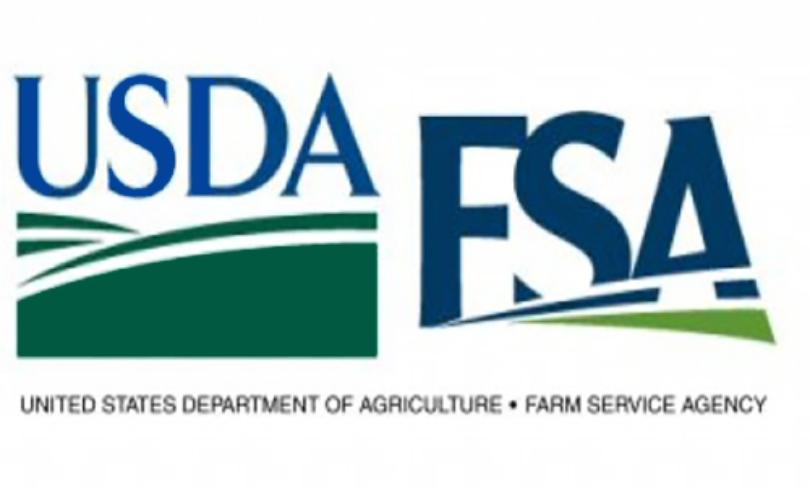USDA Reopens Signup for Continuous Conservation Reserve Program
The U.S. Department of Agriculture (USDA) is now accepting applications for the Continuous Conservation Reserve Program (Continuous CRP) signup. USDA’s Farm Service Agency (FSA) encourages agricultural producers and landowners in New York who are interested in conservation opportunities for their land in exchange for yearly rental payments to consider the enrollment options available through Continuous CRP, which also includes the Conservation Reserve Enhancement Program (CREP) offered by FSA partners. Additionally, producers participating in CRP can now apply to re-enroll, if their contracts will expire this year.
“We are pleased to announce we are now accepting Continuous CRP offers,” said Farm Service Agency (FSA) State Executive Director Jim Barber. “Continuous CRP is one of the best conservation tools we can provide producers and landowners. Whether a producer wants to focus on water quality benefits or work with one of our partners to address a natural resource concern in their area, the program offers many options to help you meet your resource conservation goals.”
On Nov. 16, 2023, President Biden signed into law H.R. 6363, the Further Continuing Appropriations and Other Extensions Act, 2024 (Pub. L. 118-22), which extended the Agriculture Improvement Act of 2018 (Pub. L. 115-334), more commonly known as the 2018 Farm Bill, through Sept. 30, 2024. This extension allows authorized programs, including CRP, to continue operating.
To submit an offer, producers should contact the FSA at their local USDA Service Center by July 31, 2024, in order to have an offer effective by Oct. 1, 2024. To ensure enrollment acreages do not exceed the statutory cap, FSA will accept offers from producers on a first-come, first-served basis and will return offers for approval in batches throughout the year.
Additionally, producers with acres enrolled in Continuous CRP set to expire Sept. 30, 2024, can now offer acres for re-enrollment. A producer can both enroll new acres into Continuous CRP and re-enroll any acres expiring Sept. 30, 2024.
FSA water quality practices, such as riparian buffers, prairie strips, grassed waterways, and wetlands, will receive an additional 20% incentive. Buffer practices have a positive impact on water quality. Additionally, the Climate-Smart Practice Incentive launched in 2021 is also available in the Continuous signup.
There are several enrollment options within Continuous CRP, including:
- CREP: Working with conservation partners, CREP leverages federal and non-federal funds to target specific state, regional, tribal, or nationally significant conservation concerns.
- State Acres For Wildlife Enhancement (SAFE): The initiative restores vital habitat in order to meet high-priority state wildlife conservation goals.
- Highly Erodible Lands Initiative (HELI): Producers and landowners can enroll in CRP to establish long-term cover on highly erodible cropland that has a weighted erodibility index (EI) greater than or equal to 20.
- Farmable Wetlands Program: Producers and landowners can enroll land in CRP to restore previously farmed wetlands and wetland buffers, improving both vegetation and water flow.
- Clean Lake Estuaries and Rivers (CLEAR) Initiative and CLEAR30: This initiative prioritizes and offers additional incentives for water quality practices on the land that, if enrolled, will help reduce sediment loadings, nutrient loadings and harmful algal blooms. Through CLEAR30, a component of this initiative, these additional incentives for adoption of water quality practices can be accessed in 30-year contracts.
More Information
The water quality practice incentive builds on other improvements to Continuous CRP that were made in 2021, including expanding CLEAR30 from two pilot areas to nationwide availability and repositioning SAFE within Continuous CRP to give producers and landowners more opportunities to participate. Additionally, FSA has improved CREP by creating flexibilities within CREP for partners to provide matching funds in the form of cash, in-kind contributions, or technical assistance, adding staff to work directly with partners, and expanding opportunities for Tribal Nations to participate, beginning with three Tribal Nations in the Great Plains, the Cheyenne River, Oglala, and Rosebud Sioux Tribes, for the first time ever, to help conserve, maintain, and improve grassland productivity while reducing soil erosion and enhancing wildlife habitat.
Signed into law in 1985, CRP is one of the largest voluntary private-lands conservation programs in the United States. It was originally intended to primarily control soil erosion and potentially stabilize commodity prices by taking marginal lands out of production. The program has evolved over the years, providing many conservation and economic benefits.
USDA touches the lives of all Americans each day in so many positive ways. Under the Biden-Harris administration, USDA is transforming America’s food system with a greater focus on more resilient local and regional food production, fairer markets for all producers, ensuring access to safe, healthy and nutritious food in all communities, building new markets and streams of income for farmers and producers using climate smart food and forestry practices, making historic investments in infrastructure and clean energy capabilities in rural America, and committing to equity across the Department by removing systemic barriers and building a workforce more representative of America. To learn more, visit www.usda.gov.
